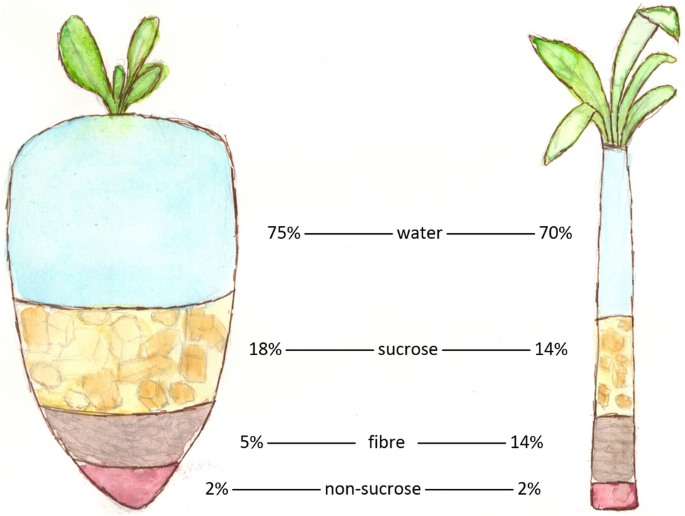The growing techniques for beet sugar vs cane sugar contribute to differences in production scale.
Discover the Uses and Advantages of Beet Sugar Vs Cane Sugar in Your Daily Diet Plan
Checking out the distinct qualities of beet and cane sugar exposes greater than simply their sweetening abilities; it highlights their one-of-a-kind influence on wellness and cookeries. Beet sugar, recognized for its refined taste, is commonly preferred in delicate treats, whereas cane sugar, with its hint of molasses, includes splendor to robust recipes. Each type holds its very own nutritional profile and glycemic ramifications, welcoming a much deeper understanding of their functions in a well balanced diet and lasting consumption techniques.
Origin and Manufacturing Processes of Beet and Cane Sugar
The distinct environments and dirt kinds needed for expanding sugar beets and sugarcane add to differences in their farming techniques and geographic distribution, influencing the business economics and sustainability of their production. beet sugar vs cane sugar.
Nutritional Contrast Between Beet Sugar and Cane Sugar
Despite stemming from various plants, beet sugar and cane sugar are nutritionally extremely comparable, both mostly containing sucrose. Each gives regarding 4 calories per gram, equating to approximately 16 calories per tsp. Structurally, both sugars are made up of approximately 99.95% sucrose, with marginal quantities of various other compounds like dampness and trace minerals, which do not dramatically change their nutritional profiles.

Ultimately, when picking in between beet sugar and cane sugar based upon nutritional web content alone, both offer identical advantages and downsides as they are essentially types of the same molecule-- sucrose, giving fast power without various other nutrients.
Effect On Wellness: Glycemic Index and Caloric Material
Exploring better into the impacts of beet sugar and cane sugar on wellness, it is vital to consider their glycemic index and caloric material. The glycemic index (GI) of both beet and cane sugar is around 65, classifying them as high-GI foods, which can cause quick spikes in blood glucose degrees.
Each kind of sugar has about 4 calories per gram, making their caloric content equivalent. For those keeping track of calorie consumption, specifically when handling weight or metabolic health and wellness conditions, recognizing this equivalence is vital (beet sugar vs cane sugar). Excessive usage of any high-calorie, high-GI food can contribute to health and wellness issues such as excessive weight, heart illness, and insulin resistance.
Environmental and Economic Considerations of Sugar Manufacturing
Beyond health influences, the production of beet and cane sugar also increases considerable environmental and economic issues. Sugar beet farming often tends to need cooler climates and has a lower geographical footprint contrasted to sugar cane, which prospers in tropical areas.
Additionally, making use of chemicals and fertilizers in both beet and cane sugar growing can lead to soil destruction and pollution, further impacting biodiversity and local water bodies (beet sugar vs cane sugar). The selection in between cultivating sugar beet or cane frequently rests on local ecological conditions and economic aspects, making the sustainability of sugar manufacturing a complicated concern
Culinary Applications and Taste Differences
While the environmental and economic elements of sugar manufacturing are certainly significant, the selection between beet and cane sugar additionally affects culinary applications and flavor profiles. Beet sugar, acquired from the sugar beet plant, is helpful site recognized for its incredibly neutral taste.
Cane sugar, extracted from sugarcane, typically keeps molasses traces, which pass on an unique splendor and deepness. This small molasses taste enhances the intricacy of baked items, sauces, and marinades. It is particularly preferred in items where a sugar touch is preferred, such as in brownies or gingerbread. Additionally, the slight variation in moisture material between beet and cane sugar can influence the appearance and uniformity of recipes, making cane sugar a preferred choice for certain dishes that profit from its distinct homes. find more

Verdict
Finally, both beet and cane sugar have distinct beginnings and production processes, supplying similar dietary accounts with small distinctions in sodium content and flavor. While their effect on health, especially relating to home glycemic index and calories, is similar, the selection between them usually comes down to environmental, economic variables, and specific cooking needs. Comprehending these facets can guide consumers in making educated choices that align with their wellness goals and taste choices.